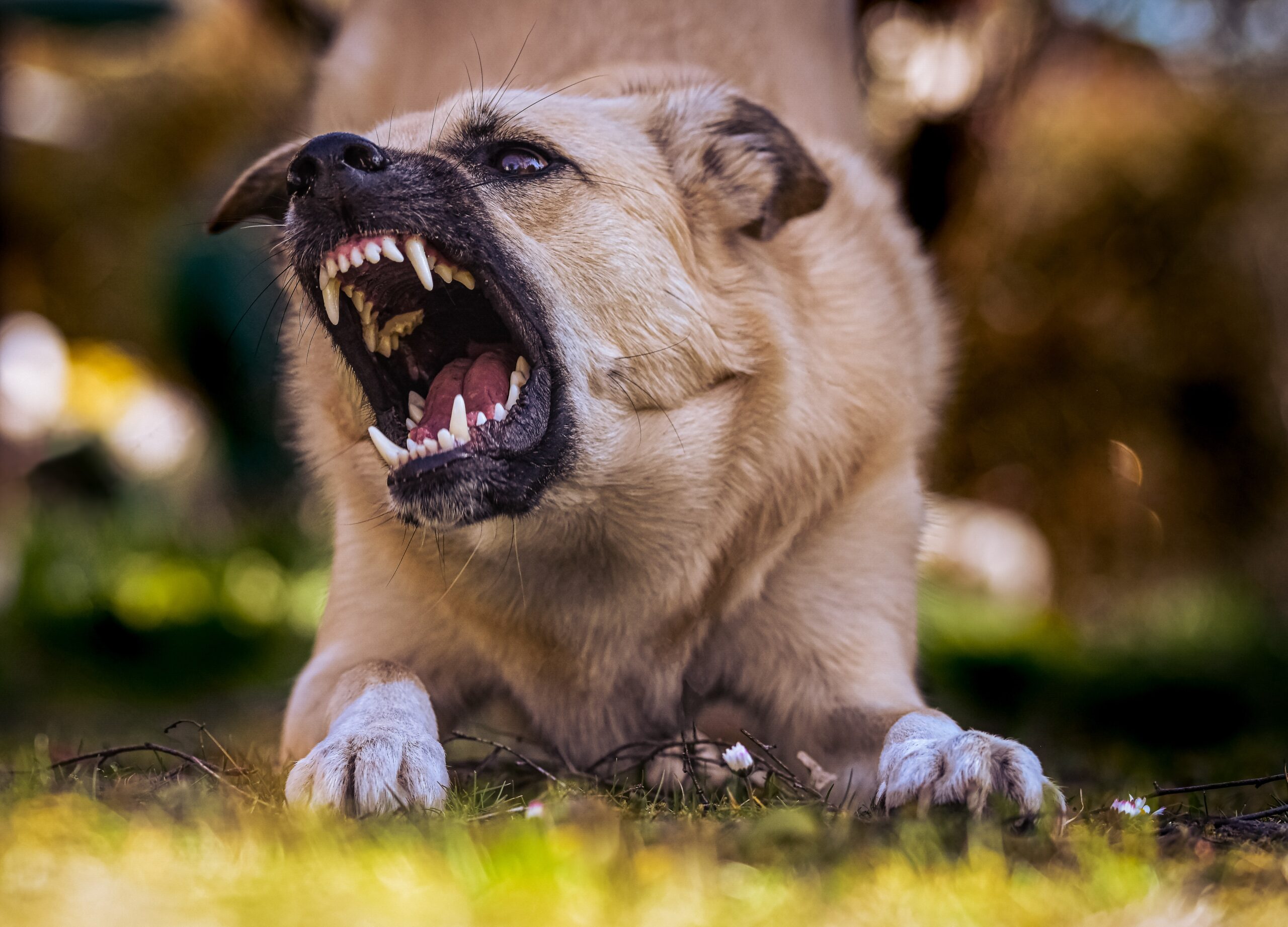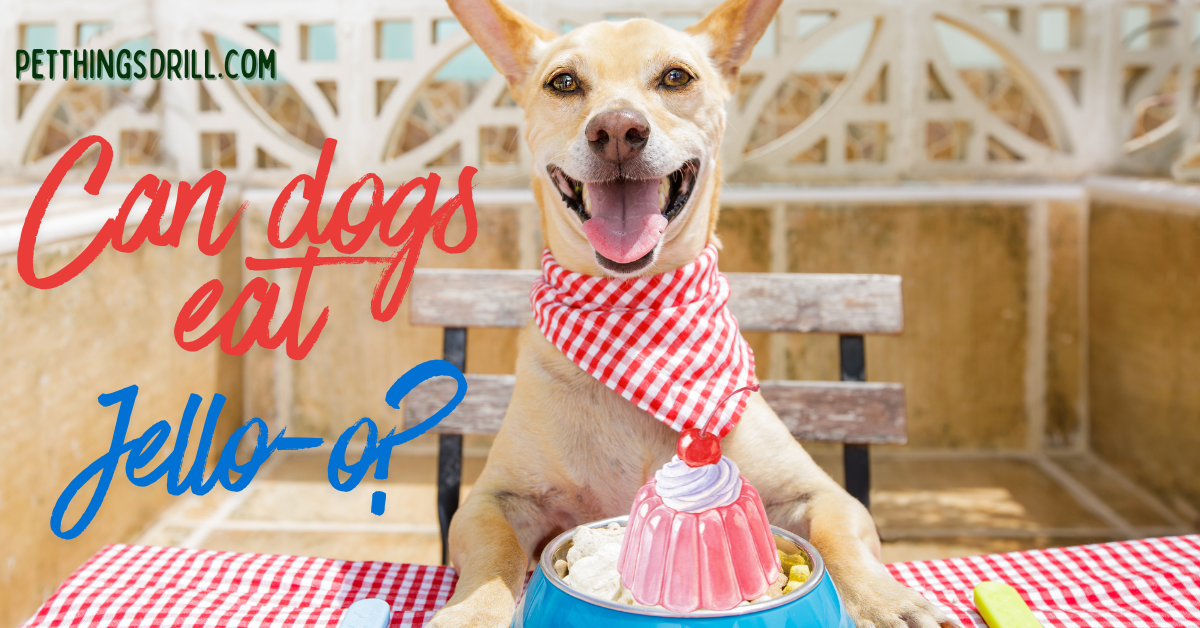

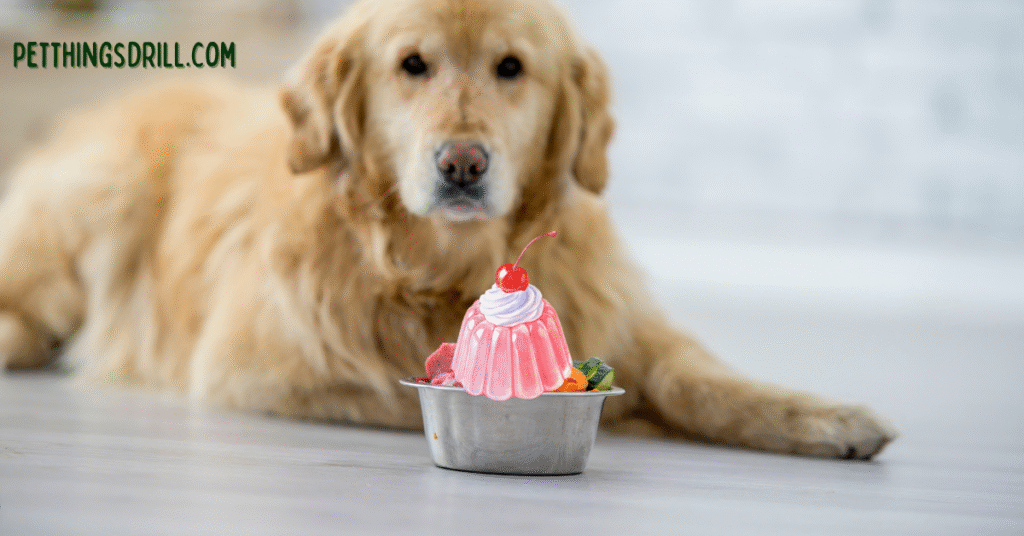
Can Dogs Eat Jello? We’ve all been there. You’re enjoying a little snack, and you feel a pair of big, soulful eyes boring into the side of your head. You look down, and there’s your furry best friend, wearing their most convincing “I haven’t eaten in a decade” face. It’s a look so powerful it could charm a treat out of a stone. When the snack in question is a colorful, wobbly bowl of Jello, you might pause and wonder, “is jello bad for dogs”
Sharing our lives with dogs means sharing our homes, our hearts, and, occasionally, our snacks. It’s a natural impulse to want to give them a taste of the things we enjoy. But as responsible pet parents, we know that what’s good for us isn’t always good for them. That’s why we find ourselves Googling everything from “Can dogs eat bananas?” to “Is this houseplant going to turn my beagle into a pumpkin?” Today, we’re tackling that jiggly dessert that brings out the kid in all of us: Jello. Let’s dive into whether this wiggly treat is a safe delight or a potential danger for our canine companions.
What Exactly Is Jello, Anyway?
Before we decide can dogs have jello? Let’s break down what Jello actually is. For most of us, Jello is pure nostalgia. It’s a staple of childhood parties, potlucks, and hospital cafeterias. That bright, translucent dessert that shimmies on the spoon is, at its core, a simple concoction.
The main ingredient in Jello and other gelatin desserts is, unsurprisingly, gelatin. Gelatin is a protein derived from animal collagen, which is found in the skin, bones, and connective tissues of animals. When you dissolve gelatin powder in hot water and let it cool, it forms a semi-solid, jiggly gel. This is what gives Jello its signature texture.
But Jello isn’t just plain gelatin. The boxed mixes we buy at the store also contain a host of other ingredients to make it the sweet, flavorful treat we know. These typically include:
- Sugar or Artificial Sweeteners: To make it sweet.
- Artificial Colors: To give it those vibrant, almost neon hues.
- Artificial Flavors: To mimic the taste of fruits like strawberry, lime, or orange.
Can dogs eat jello without sugar? So, while the base ingredient, gelatin, comes from an animal source, the final product is a mix of protein, sweeteners, and artificial additives. It’s a simple, fun treat for humans, but a dog’s digestive system is a whole different ballgame.
The Big Question: Is Jello Safe for Dogs?
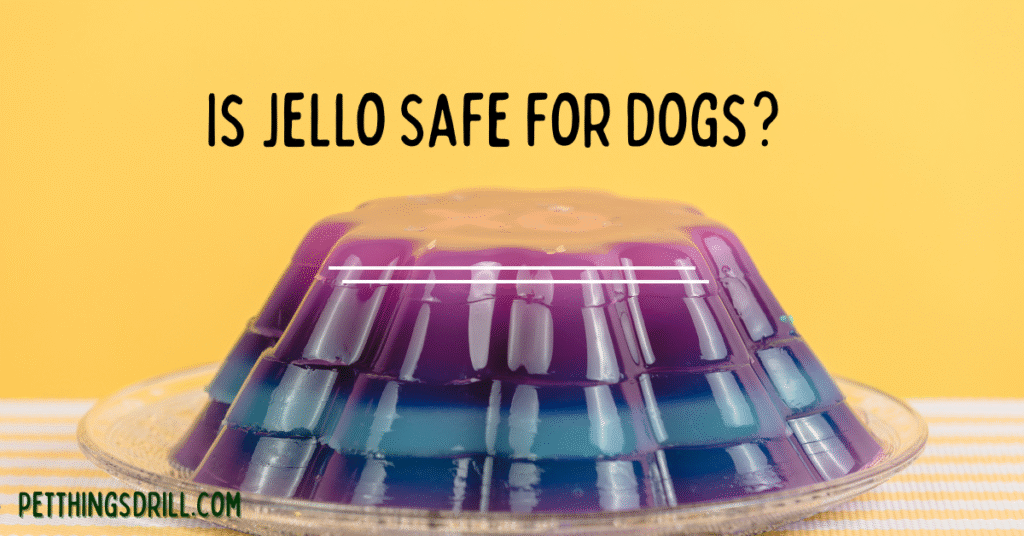
The answer to “Can dogs eat Jello?” isn’t a simple yes or no. It’s more of a “Well, it depends.” The safety of Jello for your dog hinges entirely on its ingredients. Let’s wobble our way through the good, the bad, and the downright dangerous.
Plain, unflavored, and unsweetened gelatin is generally safe for dogs. In fact, gelatin can have some minor benefits. It contains collagen and amino acids, which can be good for your dog’s skin, coat, and joints. A little sprinkle of plain gelatin powder on their food or a homemade gelatin treat (more on that later!) can be a nice, healthy supplement.
The problem arises with the commercial Jello mixes we buy at the supermarket. These are the ones you need to be extremely careful about.
Can a dog eat jello? The Sugar Overload
Most regular Jello mixes are packed with sugar. While a tiny taste probably won’t cause immediate harm, regularly feeding your dog sugary treats can lead to a whole host of problems. Just like in humans, a high-sugar diet can contribute to weight gain and obesity in dogs. This puts extra strain on their joints and can lead to more serious conditions like diabetes, heart disease, and pancreatitis, a painful and potentially life-threatening inflammation of the pancreas. A dog’s diet should be primarily based on high-quality protein and fats, not simple sugars. In short, your dog doesn’t need the extra sugar, and it provides no nutritional value for them.
Can my dog eat jello? The Artificial Stuff
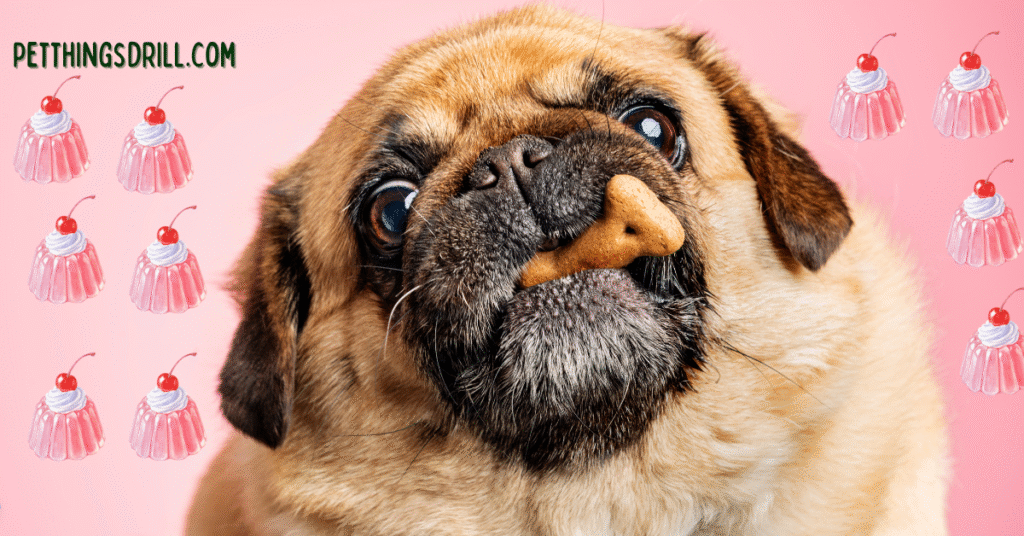
Those bright reds, greens, and oranges are the result of artificial food coloring. The fruity flavors? Artificial, too. While these additives are approved for human consumption, they can sometimes cause digestive upset or allergic reactions in sensitive dogs. You might notice symptoms like an upset stomach, gas, or itchy skin. While not usually life-threatening, it’s an uncomfortable experience for your pup that is easily avoided.
The Xylitol Danger: A Critical Warning
Can dogs eat jell-o? This is the most important part of the conversation. If you remember nothing else, remember this: Sugar-free Jello can be deadly for dogs.
Many “sugar-free” or “diet” products, including Jello, use artificial sweeteners to replace sugar. One of the most commonly used sweeteners is xylitol. While perfectly safe for humans, xylitol is extremely toxic to dogs.
When a dog ingests xylitol, it’s rapidly absorbed into their bloodstream, causing the pancreas to release a massive amount of insulin. This leads to a sudden and severe drop in blood sugar (hypoglycemia), which can happen within 10 to 60 minutes. Symptoms of xylitol poisoning include:
- Vomiting
- Weakness and lethargy
- Stumbling or lack of coordination
- Collapse
- Seizures
Can Dogs Eat Jello? You must know that in high doses, xylitol can also cause acute liver failure, which is often fatal. Even a small amount of a product containing xylitol can be enough to poison a small dog. Always, always, always check the ingredients list on any sugar-free product before even thinking about giving it to your dog. If you suspect your dog has eaten anything containing xylitol, treat it as a medical emergency and contact your veterinarian or an animal poison control center immediately.
Healthier, Dog-Friendly Alternatives
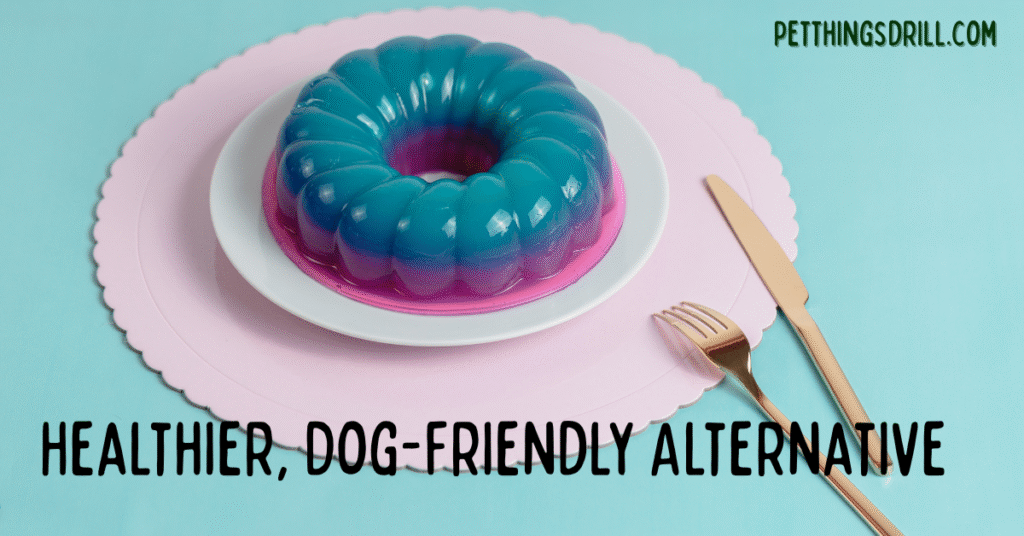
Can dogs eat gelatin? So, the store-bought Jello is mostly a no-go. But what if you still want to give your dog a fun, jiggly treat? Good news! You can easily make your own dog-safe treats at home. Is jello good for dogs? It’s simple, and you have complete control over the ingredients.
Here’s a basic recipe for homemade “pupsicles” or gelatin squares:
Ingredients:
- 1 cup of cool water or dog-safe liquid (like plain, low-sodium chicken or beef broth, or water from boiling vegetables).
- 1 tablespoon of unflavored, unsweetened gelatin powder. Make sure it contains only gelatin.
- Optional mix-ins: A spoonful of plain pumpkin puree (not pie filling!), a few blueberries, or finely chopped cooked carrots or apples (no seeds!).
Instructions:
- Pour half of your liquid (1/2 cup) into a small bowl and sprinkle the gelatin powder over the top. Let it sit for about 5 minutes to “bloom”—it will absorb the liquid and get wrinkly.
- While the gelatin is blooming, heat the other half of the liquid (1/2 cup) until it’s hot but not boiling.
- Pour the hot liquid over the bloomed gelatin mixture and stir until the gelatin is completely dissolved.
- If you’re using any mix-ins, stir them in now.
- Pour the mixture into a shallow dish, an ice cube tray, or silicone molds.
- Refrigerate for at least 3-4 hours, or until the gelatin is firm.
- Once set, you can cut the gelatin into small, bite-sized squares or pop them out of the molds.
These homemade treats are a fantastic alternative. They’re hydrating, low in calories, and you can customize them with ingredients your dog already loves. Plus, watching your dog happily lap up a wobbly treat you made just for them is incredibly rewarding.
Can Dogs Eat Jello? A Treat Is a Treat, But Health Is Everything
As dog owners, we share an unspoken bond with our four-legged family members. We want to see them happy, and sharing a treat feels like a simple act of love. But the most loving thing we can do is protect their health and well-being.
Can dogs eat cherry jello? When it comes to Jello, the risks associated with the store-bought versions—especially the sugar-free kind—far outweigh any fleeting moment of shared snacking. By opting for safe, homemade alternatives, you can still give your pup a fun and tasty treat without any of the worry.
So next time you’re enjoying a bowl of Jello and those puppy-dog eyes start working their magic, you’ll know exactly what to do. Smile, give them a scratch behind the ears, and head to the kitchen to whip up a batch of wobbly wonders made just for them. It’s a win-win: they get a delicious, safe treat, and you get the peace of mind that comes with being a thoughtful and loving pet parent.
